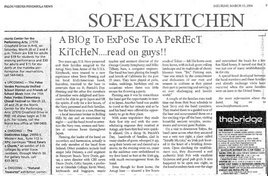 HoB CaRe KiT
HoB CaRe KiT A HoTpLaTe ReStOrEr
A HoTpLaTe ReStOrEr A ClEaNeR CoNdItIoNeR
A ClEaNeR CoNdItIoNeR A PoWeR ClEaNsEr
A PoWeR ClEaNsEr A CeRaMiCs ScRaPeR
A CeRaMiCs ScRaPeRCooker / Hob Cleaning Products
Hob Care Kit - The Easy-Do Hob Care Kit consists of a 250ml sized Cleaner Conditioner,a 250gsm bottle of Power Cleanser and a Scraper to provide a quick and efficient means of removing...(click here for further information)
Hot Plate Restorer - Easy-Do Sealed Hot Plate Restorer restores hotplates back to black as well as protecting against rust. Supplied in a tube with an integral sponge ....(click here for further information)
Cleaner Conditioner - Easy-Do Cleaner Conditioner is specially formulated to clean, Polish & Protect ceramic & halogen glass. This product is designed for every day use and leaves a protective ...(click here for further information)
Power Cleanser - Easy-Do Power Cleanser is designed for occasional use to remove stubborn burnt on deposits as well as salt and mineral stains that occur in certain areas. Power Cleanser .....(click here for further information)
Ceramic Scrapers (box of two) - Easy-Do Ceramic Scrapers provide a quick and efficient means of removing the bulk of burnt on deposits before the hob is cleaned & polished .....(click here for further information)
Hob Care Kit - The Easy-Do Hob Care Kit consists of a 250ml sized Cleaner Conditioner,a 250gsm bottle of Power Cleanser and a Scraper to provide a quick and efficient means of removing...(click here for further information)
Hot Plate Restorer - Easy-Do Sealed Hot Plate Restorer restores hotplates back to black as well as protecting against rust. Supplied in a tube with an integral sponge ....(click here for further information)
Cleaner Conditioner - Easy-Do Cleaner Conditioner is specially formulated to clean, Polish & Protect ceramic & halogen glass. This product is designed for every day use and leaves a protective ...(click here for further information)
Power Cleanser - Easy-Do Power Cleanser is designed for occasional use to remove stubborn burnt on deposits as well as salt and mineral stains that occur in certain areas. Power Cleanser .....(click here for further information)
Ceramic Scrapers (box of two) - Easy-Do Ceramic Scrapers provide a quick and efficient means of removing the bulk of burnt on deposits before the hob is cleaned & polished .....(click here for further information)










